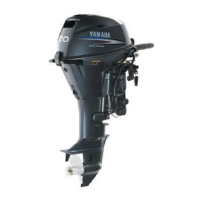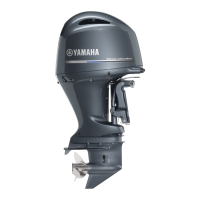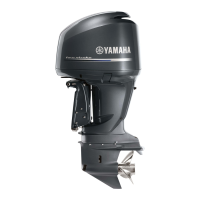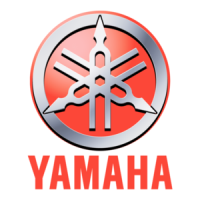2-10
GB
EMU00108
STEERING FRICTION ADJUSTING
SCREW(for Tiller control model)
A friction device provides resistance to
steering movement. This is adjustable for
operator preference. An adjusting
screw/bolt is located on the swivel brack-
et.
EMU00111*
Adjustment
w
Do not over tighten the friction
screw/bolt. If there is too much resis-
tance, it may be difficult to steer, which
could result in an accident.
Resistance Screw/Bolt
Increased Turn clockwise
Decreased
Turn counterclockwise
408031
EMU00114
TRIM TAB
The trim tab should be adjusted so that
the steering control can be turned to
either the right or left by applying the
same amount of force.
w
An improperly adjusted trim tab may
cause difficult steering. Always test run
after the trim tab has been installed or
replaced to be sure steering is correct. Be
sure you have tightened the bolt after
adjusting the trim tab.
1 Trim tab
2 Bolt
Boat tends to veer The fin of trim tab
To the left Turn to the left(port side),
(port side) “A” in the figure
To the right “Turn to the right
(starboard side) (starboard side),
“B” in the figure
65W-9-77-2 (E,F,S) 3/25/02 7:36 PM Page 22






